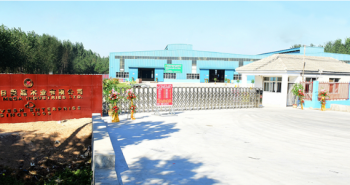Composition
MDF can be manufactured with either softwood or hardwood species. The majority of MDF manufactured is composed mainly of softwood although some individual brands may contain a higher percentage of temperate hardwood depending on the location of the factory to the local forest resource.
The constituents of a typical standard MDF manufactured in the United Kingdom or Ireland are 82% virgin wood fibre (wholly or mainly softwood), 10% synthetic resin binder, 7% water, less than 1% paraffin wax solids and less than 0.05% silicon. The most common binder is urea-formaldehyde (service class 1 or ‘dry’) although depending on the grade and end use of the product other binders may be used, i.e. melamine urea-formaldehyde, phenolic resins and polymeric methylene di-isocyonate (PMDI) which are generally applied in boards that require an improved moisture resistance.
Manufacturing process
The raw material used is often forest thinning, undersize sawmill stock up to about 200mm in diameter and sawmill residues that are initially chipped to approximately 20mm squares that are 3-4mm thick. This goes through a screening process to remove large particles and any metal. The next stage in the process is to reduce the chips into fibres. The chips are subjected to steam under pressure which softens the lignin in the wood. The most common method of producing fibres is by using a defribrator which breaks up the softened chips between two revolving segmented discs.
The next stage is to add resin to the fibres. This is done by blowing fibres down a pipe which can be 1m wide and as long as 90m. In the pipe the defribrated fibres are first dried, once dried resin is added to the fibres. The resin is blown into the pipe and coats the fibres as they pass or this carried out in a separate chamber. Dried and resinated fibres are the fed onto a conveyor belt to form the mat. The mat can be as much as 500mm or greater to begin with but is gradually reduced in size before final pressing. The final pressing stage is carried out under heat and pressure for a predetermined length of time. Once pressed, boards are conditioned and cut to size.
Applications
Due to the particular machining and finishing attributes combined with good working properties and its availability in a wide range of sheet thicknesses and sizes, MDF finds application in a wide range of construction and furniture applications. It is used increasingly for interior design and building applications such as skirtings and architraves, windowboards, wall linings, and decorative facades, as well as the core material for some floorings.
MDF can be cut without breakout or splintering and it can be profiled on the edges and surfaces. The smooth and relatively dense surface provides an excellent base for painting, veneering and laminating. Consequently MDF is used extensively in furniture production, and with the range of value added variants, its use is being extended into shopfitting and display, interior fitments, exterior application (e.g. signage and shop fronts) as well as components within numerous other products.

